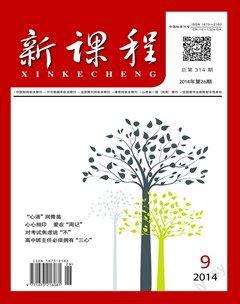依托语篇 活化词汇教学
【教材分析】
上海版牛津教材每个单元都有一个学习主题,把要掌握的语言知识和结构功能融入主题单元中,通过学习使学生掌握运用语言的能力,最终达到有意义的语言输入来激活有意义的语言输出。
Look at the shadow是牛津英语上海版4B第一模块Using my five senses中的第三单元。这一单元是四年级学生学习了嗅觉感官、触觉感官、味觉感官之后的视觉感官的学习,教材选择了学生感兴趣的shadow,要求学生能听懂、会说并会认读单词hill, lawn, path, bench等。本单元涉及的句型与时态包括to be句型、一般现在时态和祈使句等,通过太阳、事物和影子的位置与变化,巩固并掌握相关单词、形容词的运用以及一般现在时态(第三人称单数形式)的运用。在此过程中,告诉学生注意观察周遭世界,感受自然的神奇与魅力。
【学情分析】
四年级学生活泼好动,有思想,有个性,敢表达。经过三年多的语言学习,有了一定的学习基础,能运用所学知识进行简单的交流与会话。这个年龄段的学生,对故事学习尤为感兴趣。
【研究缘由】
著名教育家苏霍姆林斯基说:“教师如果不想方设法使学生产生情绪高昂和智力振奋的内心状态,而只是不动感情的脑力劳动,就会带来疲倦。”爱听故事、爱讲故事是儿童的天性,所以,通过语篇在情节的推进中学习新知,不但能激发学生学习英语的兴趣,也能为学生提供更为适切的语言训练环节与机会,确保学生不会因为记单词、背句子感到枯燥无味而产生压力。
那么,该如何设定有效的语篇材料,借助其来帮助学生理解词汇、操练词汇,从而达到运用的目的呢?为此,我们进行了一次有益的尝试。
【第一次教学片段】
…
II. While-task procedure
1.learn:hill
Its a sunny day. Miss Fang and her students are in the park. There is a hill in the park. It is not a mountain. So it is not very high. They want to climb the hill.
Ask: Whats in the park?
Read: hill
hill mountain
Answer: How is the hill? Whats on the hill? What do you want to do on the hill?
2.learn: lawn
Now Miss Fang and the students are at the top of the hill. They can see the blue sky. They can see the green trees and beautiful flowers. They can also see the green grass. There is a lawn in front of the hill. What a nice place!
Read: lawn
Ask: What can we do on the lawn?What cant we do on the lawn?
3.learn: path bench
They have a picnic on the lawn. They have some fruit, some drinks and some bread.
Ask: Look! Whats on the lawn?
Read: bench benches
bench beach
T: Next to the bench, there is a path.
Read:path
III. Post-task activities
Choose the words and complete the passage.
【指导交流】
上完课后,新区英语教研员吴老师就这堂课与我进行了如下交流。
吴老师:小陆,基于单元主题的课时话题落实要求,教师应从学习资源出发,拟定一个适切的学习话题,把新授的词汇放置在语篇情景中逐一展开,而不是简单地理解成4B Module 1 Unit 3 Look and learn.
我:哦,我认为Look and learn就是本课时的学习话题。那吴老师,根据本课时的教学内容,我能否以At century park作为本课时话题呢?
吴老师:完全可以啊!还有,有了话题,要设计出适合的学习内容,将所学新知自然妥帖地整合于学习材料。此外,要注意语段与语段之间的衔接。
我:哦,在某些环节上过渡是不太恰当。比如,在第一张幻灯片结束之后,我的过渡语是:We are in the classroom. Do you want to go to the park?我觉得这样的过渡还是比较唐突的,若改成We are in the classroom. Do you want to go the park?(Yes.)Miss Fang and her students are there. Lets go and have a look.应该这样更恰当、更妥帖。
吴老师:是啊!还有,在教学时,给出恰当的、有意义的语境,提出发散性的问题,给予学生思考的时间,鼓励学生发表自己看法的机会,这样能提供给学生更多的学习经历,从而确保其能力的提高。
我:在平时的教学中,我总是希望提出问题后学生能马上回答问题,如发现学生没反应,我会重复数遍,其实这是错误的。
吴老师:就语篇设计而言,你所编的有关path, lawn, bench的材料不够完整,应该从What, How, Where, How many等方面加以关注,这样,能让学生将观察、思考与描述有机结合,也能使整节课更完整,内容更充实,学生学得更带劲。
我:谢谢吴老师的指点。你这样一说,我的思路清晰了,让我重新设计,再来上一次At century park。
于是,进行了第二次教学尝试。
【第二次教学片段】
1.激趣
(1)Ask and answer(呈现公园的幻灯片,有鸟舍、喷泉、植物棚等,学生开火车提问并回答)
(2)呈现一部Flash短片(师生同唱)We are going to the park.
(3)出示课题At century park
评析:通过同学间的提问,复习之前学过的单词aviary, fountain, plant house等,生生间的相互提问代替了师生间的提问,提供了学生更多说话的机会。而抓住学生喜欢去公园的特点而演唱的We are going to the zoo,既活跃了课堂气氛,又自然导出了学习话题。
2.感知内容
Its a sunny day. Miss Fang and her students are in the park. Theres a hill in the park. It is not a mountain.So it is not very high. They want to climb the hill.
(1)教师朗读文本,让学生感知hill这个单词
(2)Read the new word: hill
(3)Find out the differences between the hill and the mountain
教师出示hill和 mountain的对比图,让学生寻找hill和 mountain的差异,并让学生明白什么时候用hill,什么时候用mountain,这是教师可以提问Do you like climbing the mountain? Do you know Huang Mountain, Wutai Mountain?You can climb the mountain in summer holiday.
评析:直接进入了语篇的学习,在教授单词时关注语篇的呈现方式,通过hill和 mountain的比较,了解了hill和 mountain的使用。在此过程中,教师关注了学生的兴趣,提出了适切的生活建议,为学生语言输出积累了材料,丰富了生活体验。
3.理解内容
Now Miss Fang and the students are at the top of the hill. They can see the blue sky. They can see the green trees and beautiful flowers. They can also see the green grass. There is a lawn in front of the hill. What a nice place!
(1)Listen and answer
Are Miss Fang and her students at the top of the hill?
How is the sky?
What can they see?
Whats in front of the hill?
(2)Read the words and frases
lawn←the green lawn,walk on the lawn,have a picnic on the lawn(鼓励学生正确朗读,以正确了解其含义)
(3)Lets talk
What can we do on the lawn?
What cant we do on the lawn?
(have a picnic throw stones play football sleep sing and dance ride a bicycle fly a kite, 把能做的事情归一类,把不能做的事情归成另一类,并及时小结These activities we can do those activities we cant do.)
评析:将新单词的学习融于一定的语篇材料中,在整体感知的基础上分步操练。在操练的同时又及时进行情感教育,注重了学生的情感体验,进一步加深了新授词汇的理解。
4.操练与巩固内容
Look at the picture and guess
(1)Whats on the lawn?
How is the bench? What can you do on the bench?
How is the path? What can you do on the path?
(2)文本材料如下:
Look!There are two benches on the lawn. Theyre smooth and hard. We can sit on the bench when we are tired. Next to the bench, there is a path. It is long and narrow. We can run, walk ride a bicycle on the path.
Read the words
path bench→benches
bench→beach
评析:通过设置悬念来揭示新授单词path和bench,激发了学生思维,提高了学生学习的兴趣。根据提问,整合成一个小语段,调动了学生学习的积极性,提高了教学效果,为学生的写话奠定了基础。
【教学反思】
词汇教学不能脱离语篇材料,作为教师,要学会将语篇作为一个完整的整体呈现,融所学词汇于一定意义的材料中,切实做到字不离句、句不离篇。
单词教学既是一个独立的整体,又是单元教学的一部分。作为教师,要在教学过程中把握好教材间的联系,合理地整合成相应的语篇进行教学,只有这样,才能显现教学成效。
一、让新知学习更有效
词汇教学的一条行之有效的途径就是要让词汇教学贯穿于语篇教学的全过程,让学生在具体的语言环境中感受其意思,获得深刻的印象,从而达到积累和正确运用的目的。
如,本课例中,教师通过How is the hill?Whats on the hill? What animal can climb the hill?What do you want do on the hill?等问题的思考组织学生讨论新授单词hill,在思考、交流与分享中理解了hill,操练了hill,也运用了hill。
二、让旧知复现更有量
基于语篇的单词教学,要求教师在教学中重视已学过的各种单词和句型,让学生运用有关旧知对新知进行感悟理解和描述表达,以此降低新知难度的目的,同时还拓展了新知运用的平台。
在本节课的热身阶段,教师将已学过的旧知进行了回顾和整合,帮助学生输出相关的知识,使旧知的复现更有量。如,Whats in the park?What colour are the flowers?Is there a pond in the park? Can you swim in the pond?What can you see in the aviary?Do you like bird? Why?通过图片与学生间的交流,激活学生的知识储备,为新授的推进奠定扎实的基础。
三、让新知巩固更有味
语言学习最好的巩固方式就是运用。词汇因为语篇才能更好地体现出其丰富的词汇意义,词汇一旦离开具体的语言载体,就是一个抽象的符号,缺失了丰富的意义。
如,在教授完hill这个单词后,鼓励学生能用简短的几句话来介绍:Look,there is a hill in the park. Its not very tall. Now I am climbing the hill with my friends. I like climbing the hill.正依靠小语篇的作用,让词汇找寻到了赖以生存的沃土,从而滋润着一个个词汇,使它们变得鲜活、有味起来。
总之,在平时的课堂教学中,教师要善于基于语篇进行词汇教学,通过语篇和语境的创设来带动语言学习与语用体验。可以说,通过对内容的理解、仿说,在材料中巩固了新词汇、操练了新词汇、运用了新词汇,最终完成了“语量”的积累以及能力的提升。
参考文献:
[1]朱浦.教学专题透析[M].上海教育出版社,2008.
[2]朱浦.教学理论探究[M].上海教育出版社,2008.
作者简介:陆晔,女,大学本科,就职于浦东新区孙桥中心小学,研究方向:小学英语教学。
编辑 张珍珍

